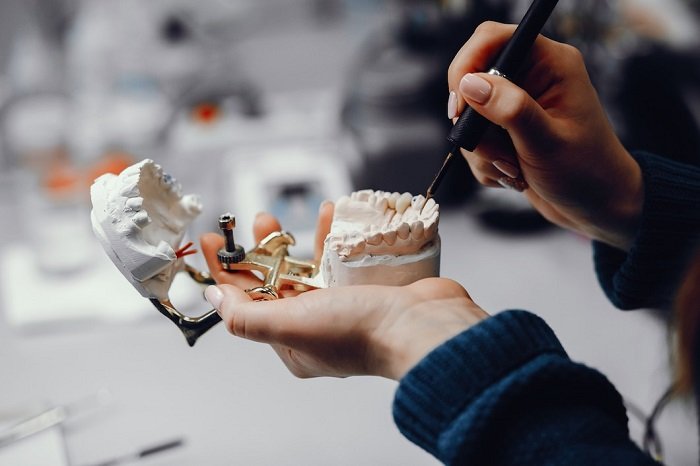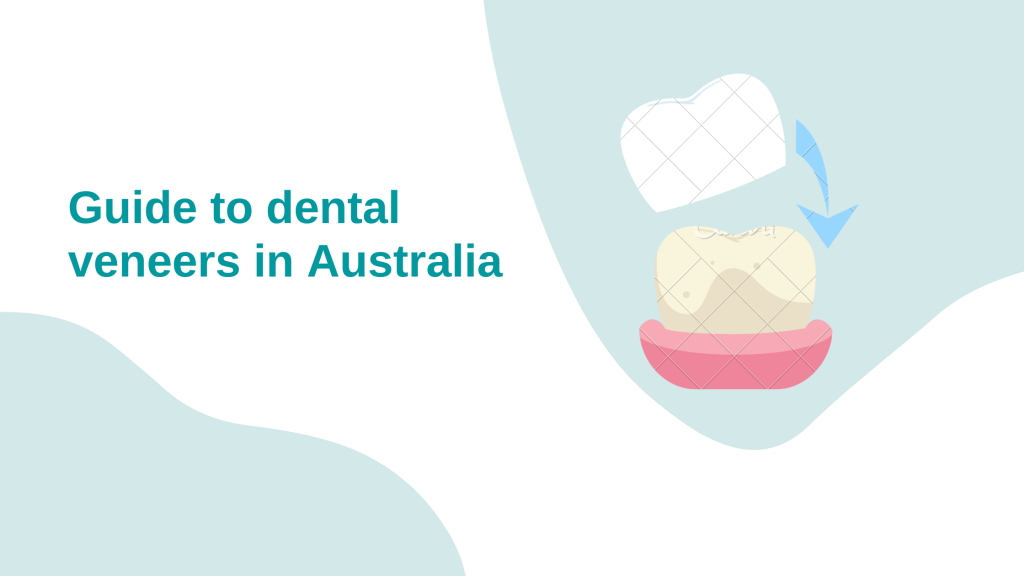Do you long for a perfect Hollywood smile? Or maybe you’ve chipped a tooth and want to get it fixed? Then perhaps what you need are dental veneers!
What Are Veneers?
Not many people know what are veneers. But you’ve probably seen the many teeth transformation videos on IG and TikTok that often actually use veneers. So then, what are they? Teeth veneers or dental veneers (unsurprisingly) came into existence because one guy (namely dentist Charles Pincus) tried to help an actor achieve the perfect smile for the silver screen.
Within cosmetic dentistry, teeth veneers are a tool used to alter the look of natural teeth. They are like thin shells that get attached to the front of your teeth to achieve the look that you desire. However, before they can be glued, the dentist will need to remove some natural enamel on your teeth (the amount depends on the type of veneers you get).
There are various usages for veneers, such as altering the size, shape, length, and color of your teeth as necessary. So if you’re curious about the different types and price points of teeth veneers in Australia, make sure to read until the end.
What Are the Different Types of Veneers?
Now that you know what they are, let’s take a look at the two main materials ce veneers in Australia are often made of: porcelain and composite resin. Each has its own benefits, so your choice mainly depends on your end goal and budget.
Porcelain Veneers
If you like the look of natural teeth, then porcelain veneers are what you’re looking for. These teeth Ceramic Veneers in Australia are stain-resistant and look quite similar to natural teeth, especially in how they reflect light.
However, before gluing them on, your dentist will need to remove more of the natural enamel you have compared to the composite resin veneers. But, on the plus side, the lifespan of veneers made of porcelain is higher, as they are much stronger and are less likely to become discolored over time.

Composite Resin Veneers
The second type of veneers is made of composite resin, so they are thinner than porcelain ones. Compared to porcelain veneers, less natural enamel will be removed, and the cost will be lower as well, making it a good choice for those who have a limited budget. Although they are more likely to become stained over time, with good oral hygiene, they can look amazing for many years.
Before deciding which one to go for, be sure to talk to your dentist about their pros and cons.
Can Veneers Ruin Your Teeth? Disadvantages of Veneers
Veneers can’t really ruin your teeth as long as you take care of them (which is relatively easy). However, there are cases when decay can occur, such as if the veneers aren’t installed properly, or dental hygiene is neglected.
That said, despite its many advantages, veneers also have their downsides.
First of all, the process is irreversible, meaning that it is a permanent change to your smile.
Next, if one of your dental veneers chips or cracks, it often can’t be repaired, so you will need to replace the whole veneer. So if you are someone that often grinds or clenches your teeth, veneers might not be a good fit for you.
Also, since a part of your natural tooth gets filed away, you might become more sensitive to hot and cold food/drinks.
In addition, the color of your teeth veneers is also permanent, which means that it may not fully match the color of your other teeth. That’s why if you want to have a brighter smile, make sure to get teeth whitening before starting the process. This also means that people that have insufficient enamel on their teeth or don’t have healthy teeth will be ineligible for veneers.
What Is the Procedure For a Dental Veneer?
Dental veneers typically require three visits. The first is for a consultation, while the second and third are for the creation and application of said teeth veneers. The veneering procedure in most countries, including Australia, can be carried out on one or more teeth simultaneously. So let’s get started!
Stage 1: Diagnosis & Plan for Treatment
At this stage, you will research how much do veneers cost Melbourne then after finding a good dentist discuss with him/her your goals for getting dental veneers and what results you want to achieve. Your dentist will evaluate your teeth during this visit so they can determine whether dental veneers are a good option for you. They will also go through the procedure’s advantages and disadvantages so that you can make an informed decision. It is also possible that imprints and X-rays of your mouth and teeth are taken at the appointment.
Stage 2: Preparing the Teeth for Veneers
Onto stage 2. Usually, on your second visit, your dentist will reshape the surface of your tooth to almost exactly match the thickness of the veneer that will be applied to it in order to prepare the said tooth for a veneer. After discussion, you and your dentist can decide if they will numb the area first and then remove the enamel. Afterward, your dentist will create a model (or an impression) of your tooth, which will be transported to a dental lab, where the actual teeth veneers will be made. This process usually takes about 2 to 4 weeks on average. In the meantime, you can also wear temporary dental veneers.
Stage 3: Bonding the Veneers to the Teeth
Finally, the last stage of the veneer procedure: the bonding. Before securely attaching the veneer, the dentist will first place it on your tooth to check its fit and color. They will then repeatedly remove and trim the veneer to obtain the ideal fit. The color of the dental veneer can be altered using the shade of the cement being used.
The next step will be cleaning, polishing, and etching your tooth to get it ready for the veneer. The etching process makes the tooth rougher by etching to promote a powerful bonding process. The veneer is coated with a unique cement before being placed on the tooth. After placing the veneer in the ideal location, the dentist will use a special light beam that activates the chemicals present in the cement and hastens the hardening process.
The last few steps entail cleaning up and removing any extra cement, assessing your bite, and making necessary corrections. In order to examine your gums and the placement of the veneer, you may be asked to return for a follow-up appointment in a couple of weeks.

How Long Does It Take to Get a Veneer?
Before getting veneers, be prepared that the process will likely be somewhat uncomfortable and also time-consuming. Based on how many veneers you will get, you may have to stay in the chair for a few hours, not to mention that it is usually not complete in one sitting. To give you an idea, getting 10 teeth veneers can take about 3 hours.
Are Veneers Painful to Get?
If you don’t like pain, then you’re in luck! Before beginning the veneer process mentioned above, your dentist will numb the place with a local anesthetic. However, it is common to experience a few hours of sharp or dull pains after the anesthetic wears off. At that time, you can use Ibuprofen or other pain medication to lessen your discomfort.
A few days after your procedure, you might feel a bit off when biting anything, and zings of pain can also occur. In either case, you can ask your dentist to make slight adjustments to your teeth with a file to clear away excess microscopic pieces of cement that have stuck between your teeth, the usual culprit of such pains.
The good news is that this pain will be temporary. Usually, after a month or so, you may even forget you had anything done to your teeth.
Price of Dental Veneers Australia
The costs associated with veneers can vary depending on various factors, such as the country you are getting the procedure done and the actual material the veneer will be made of. For example, porcelain veneers are often much more expensive than dental veneers made of composite resin since the former’s material is much more durable than the latter. Veneer cost in Australia is usually somewhere between $500 for composite veneers and, on average, about $1300 for porcelain ones. By the way, this is the price for a single veneer, but depending on where you get the procedure, bundles may be available depending on how many veneers you’d like to get.
Final Thoughts
To summarize, teeth veneers help alter the look of your teeth. They have different shapes, colors, and sizes, so you can match them with your other teeth. Porcelain veneers are usually more long-lasting and expensive than composite veneers, which can last longer if you maintain good dental hygiene. The procedure to get veneers may take a few visits, where you would first consult with the dentist to check the condition of your teeth, prepare the teeth by removing part of the enamel, and finally bond the veneers. Remember, the procedure is permanent, so make sure to discuss the advantages and disadvantages of getting veneers with your dentist.
[monsterinsights_popular_posts_inline]
Resources



I always spent my half an hour to read this website’s articles all
the time along with a mug of coffee.